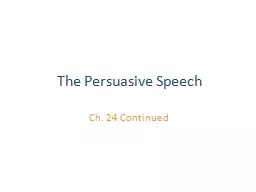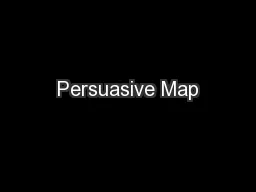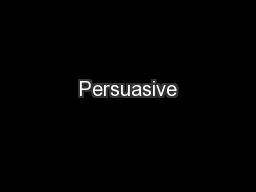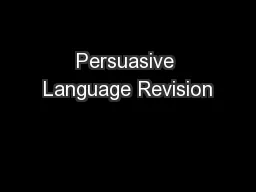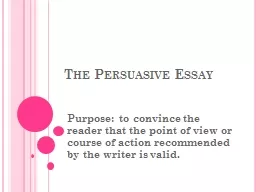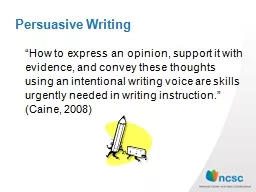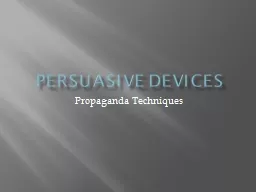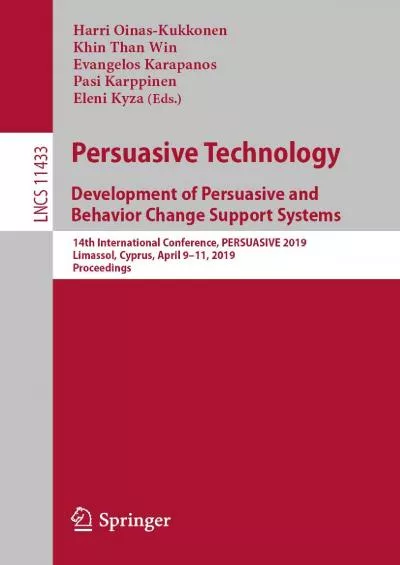PPT-The Persuasive Speech
Author : marina-yarberry | Published Date : 2016-06-16
Ch 24 Continued Classic Persuasive Appeals Using Proofs Pathos Proof by Emotion Aristotle taught that successful public speakers identify and appeal to four sets
Presentation Embed Code
Download Presentation
Download Presentation The PPT/PDF document "The Persuasive Speech" is the property of its rightful owner. Permission is granted to download and print the materials on this website for personal, non-commercial use only, and to display it on your personal computer provided you do not modify the materials and that you retain all copyright notices contained in the materials. By downloading content from our website, you accept the terms of this agreement.
The Persuasive Speech: Transcript
Ch 24 Continued Classic Persuasive Appeals Using Proofs Pathos Proof by Emotion Aristotle taught that successful public speakers identify and appeal to four sets of emotions in their listeners. ELA. Would this technique get your attention?. Read each sentence. . Would it get your attention? Would it make you think about it?. Rate it on a scale from 1-9 with 1 being most likely to get your attention and 9 being no, not likely to get your attention.. .. My opinion statement (I deserve…): . T. wo . reasons I . want. this:. ___________________________________. ______________________________________. 2. ___________________________________. ______________________________________. Devices: Looking at THREE of the devices that advertisers use to sell . their products.. Slogans. Facts/Statistics. 8 out of 10 owners said their cats preferred it…. 98% of people asked said they liked it… . Evidence of planning and revision. . You get up to 5 marks for - . Evidence . of planning and revision. . What does this look like?. What is evidence of planning and revision?. Analysis of the ways in which the . 11/18/15. Aim. : . Can I write an effective Persuasive Essay?. Do Now: . Take out your binder & a pencil. Discussion. Persuasive Writing. Write opinion pieces on topics or texts, supporting a point of view with reasons and information.. Purpose: to convince the reader that the point of view or course of action recommended by the writer is valid.. The Persuasive Essay. To accomplish this, the writer must develop a limited topic which is well defined and debatable, that has more than one side.. Topic. any . issue that is debatable. Audience. y. our reader; the target of your communication. Purpose. to . persuade a . reader to adopt a certain point of view or to take a particular action. .. EXAMPLES of Strategies. Persuasive Introductions. Taking a Stand. Scenarios & Anecdotes. Inquiry/Questioning. Preparatory Information/Overview. Ineffective. . Introductions. I hope you enjoy…. What is the message in the media selection?. . Cats everywhere are having a hard time smelling their boxes.. Persuasive Text- Techniques. Bandwagon. Def. : everyone is doing it. Appeal. Def. : use something the viewer values to get them to buy product . How to express an opinion, support it with evidence, and convey these thoughts using an intentional writing voice are skills urgently needed in writing instruction.” (. Caine. , 2008. ). . What is Persuasive Writing?. Lesson . Goals. Define, identify, and create . examples of persuasive devices . including:. bandwagon. loaded terms. testimonial. name-calling. Essential . Questions. How does recognizing propaganda devices make you a better . Simple & Complex. Descriptive Text. A descriptive text is a text that wants you to . picture. . what they are describing:. A novel might want you to . imagine. the characters and see them in your mind.. This book constitutes the refereed proceedings of the 14th International Conference on Persuasive Technology PERSUASIVE 2019 held in Limassol Cyprus in April 2019.The 29 full papers presented were carefully reviewed and selected from 79 submissions. The papers demonstrate how persuasive technologies can help solve societal issues. They were subsequently grouped in the following topical sections Terminologies and methodologies self-monitoring and reflection systems development process drones and automotives ethical and legal aspects special application domains motivation and goal setting personality age and gender social support user types and tailoring. Most likely, you will have written a persuasive essay as part of your folio at N5. This will have been on a topic of your (or your teacher’s…) choice, based on an interest you have. Your Higher persuasive essay must be:.
Download Rules Of Document
"The Persuasive Speech"The content belongs to its owner. You may download and print it for personal use, without modification, and keep all copyright notices. By downloading, you agree to these terms.
Related Documents

